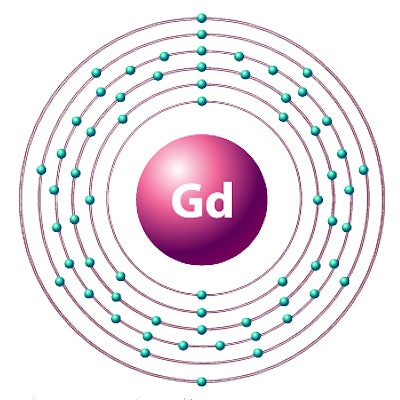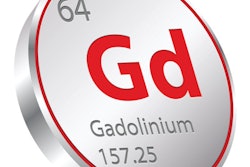
A study published in the August issue of Radiology offers further evidence of a mechanism for gadolinium deposition in the brain after the administration of MRI contrast. Researchers detected gadolinium accumulation in cerebrospinal fluid (CSF) -- even in patients with an undamaged blood-brain barrier and normal renal function.
In the study, a group from the Mayo Clinic in Rochester, MN, detected gadolinium in the cerebrospinal fluid of adult and pediatric patients after they received a macrocyclic gadolinium-based contrast agent (GBCA). The deposition occurred in patients with both normal renal and blood-brain barrier function (Radiology, August 2018, Vol. 288:2, pp. 416-423).
"These findings provide clinical evidence in humans of a potential route for how intravenously administered GBCAs ultimately are deposited in intracranial tissue," wrote lead author Dr. Avinash Nehra and colleagues. "The presence of gadolinium accumulation in the setting of an intact blood-brain barrier has substantial clinical and pharmacologic implications regarding the biodistribution of GBCAs."
The prospective, single-center study included 82 patients; 68 received the macrocyclic GBCA gadobutrol (Gadavist, Bayer HealthCare) while 14 served as a control group. The gadobutrol group included nine pediatric patients and the control group had eight.
All patients had a lumbar puncture between June 2016 and December 2016; the gadobutrol group had undergone a contrast-enhanced MRI scan within the prior 30 days, while those in the control group had not. The gadobutrol group received 0.1 mmol/kg of the agent based on their weight.
The majority of gadobutrol patients (64, or 94%) had normal renal function at the time of their MRI scans and elevated CSF total protein levels greater than 35 mg/dL (39, or 57%). CSF total protein of 35 mg/dL or less was used as a surrogate marker of an intact blood-brain barrier.
The time between gadobutrol exposure and CSF collection ranged from 1.1 to 594 hours (24.7 days). Gadolinium was detected in the CSF samples of all 68 patients in the gadobutrol group (range: 0.2-1494 ng/mL), regardless of age and CSF protein levels. Meanwhile, the median gadolinium concentration in the CSF of patients in the control group was 0 ng/mL (range: 0-0 ng/mL).
CSF total protein level greater than 35 mg/dL was associated with significantly higher gadolinium concentrations (estimate, 1.1 ± 0.26; p < 0.001), the researchers found. In addition, patients older than 18 years had significantly higher gadolinium concentrations (estimate, 0.91 ± 0.37) than pediatric subjects (p < 0.02).
Notably, gadolinium was still detectable in 13 patients whose CSF was collected 10 days after MRI scanning occurred -- even in one patient 24 days later. On the other hand, gadolinium concentrations were significantly lower in patients with normal blood-brain barrier function, compared with those who had compromised function.
"Our findings demonstrate that intravenous administration of gadobutrol is associated with immediate and persistent accumulation of gadolinium in the CSF," they concluded. "Additional studies are needed to confirm whether accumulation of gadolinium in the CSF subsequently leads to deposition of gadolinium within neuronal tissue and to find what clinical implications, if any, are associated with gadolinium accumulation in CSF."



.fFmgij6Hin.png?auto=compress%2Cformat&fit=crop&h=100&q=70&w=100)




.fFmgij6Hin.png?auto=compress%2Cformat&fit=crop&h=167&q=70&w=250)











